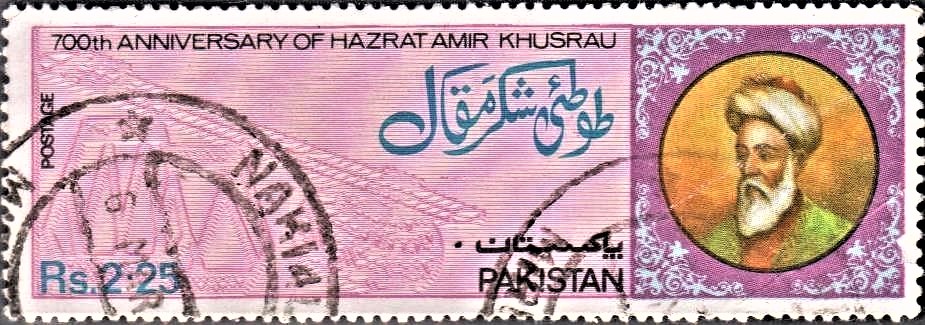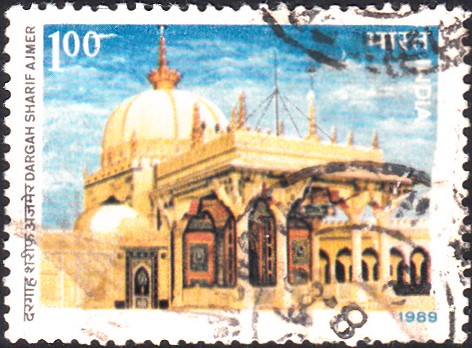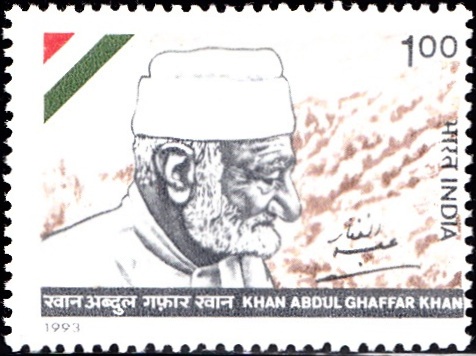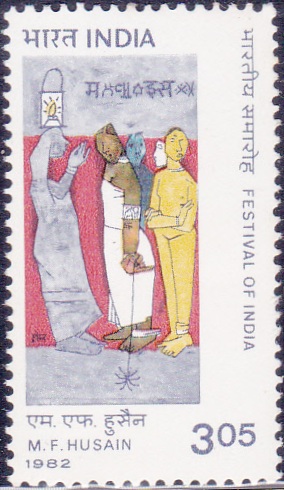
Ala Hazrat Barelvi
A commemorative postage stamp on the 75th Death Anniversary of Imam Ahmed Raza Khan Qadri, founder of the Barelvi movement :
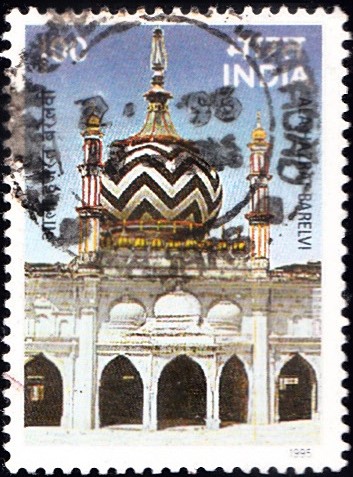
 Issued by India
Issued by India
Issued on Dec 31, 1995
Issued for : The Department of Posts is happy to issue a commemorative postage stamp in honour of Ala Hazrat Barelvi.
Design : The stamp reflects the beautiful dome of the Dargah of Ala Hazrat Barelvi which is once again repeated on the First Day Cover and the Cancellation.
Courtesy :
Maulana Tauseef Raza Khan
Cancellation : Smt. Alka Sharma
Type : Stamp, Postal Used
Colour : Multi colour
Denomination : 100 Paise
Overall size : 3.91 x 2.90 cms.
Printing size : 3.55 x 2.54 cms.
Perforation : 13.5 x 13.5
Paper : Matt Chromo Indigenous
Number of stamps Printed : 0.6 Million
Number per issue sheet : 40
Printing Process : Photo Offset
Printer : Calcutta Security Printers, Kanpur
Name : Ala Hazrat Ahmed Raza Khan Barelvi
Born on Jun 14, 1856 at Bareilly, North-Western Provinces, British India
Died on Oct 28, 1921 at Bareilly, Uttar Pradesh, British India
About :
- Maulana Ahmed Raza Khan also known as Ala Hazrat Barelvi was born at Bareilly on 14th June, 1856. He was the son of Maulana Naqi Ali Khan and grandson of Maulana Raza Ali Khan, both of whom were celebrated theologians of their time. He completed his education under his father as well as under many famous scholars.
- Maulana Ahmed Raza Khan’s knowledge was encyclopaedic with an astonishing range that covered many ancient and modern sciences and many branches of oriental learning. Apart from his well-known translation of the Quran Sharif was his study of traditions, jurisprudence, sufism, all aspects of Islamic Law, astronomy, mathematics, logic, poetry, phonetics and chemistry. His caliph Maulana Muhammad Zafar al-Din compiled his bibliography mentioning about 350 books and treaties on more than fifty branches of knowledge.
- He accompanied his father to visit Shah Al-Rasul. He was admitted to the Qadiriyya order and was permitted to enrole and train neophytes. He had similar authority in thirteen other orders. In 1878 and in 1905 he went on Pilgrimage to Mecca where he received the respect and honour of noted scholars. He began issuing Fatawa and verdicts on Muslim Jurisprudence when he was only a boy of less than 14 years. His first book was the Arabic Commentary of Hidaya Al-Nahv which he wrote at the age of 10 years. He also wrote in Arabic, Persian and Urdu on diverse topics. It is estimated that he wrote over a thousand books, hundreds of treaties and annotations and commentaries on more than 150 books pertaining to various branches of learning. In 1904 he founded a Dar-al-Ulum Manzar-i-Islam at Bareilly in India. To-day scores of Dar-al-Ulum in the sub-continent are functioning under his influence.
- He was a poet who dedicated the beauty of his selected style called Na’at to sing the glories of the Holy Prophet. His devotion elevated his poetry, making it ecstatic and rich. He passed away in 1921 and his mausoleum is situated at Bareilly.



